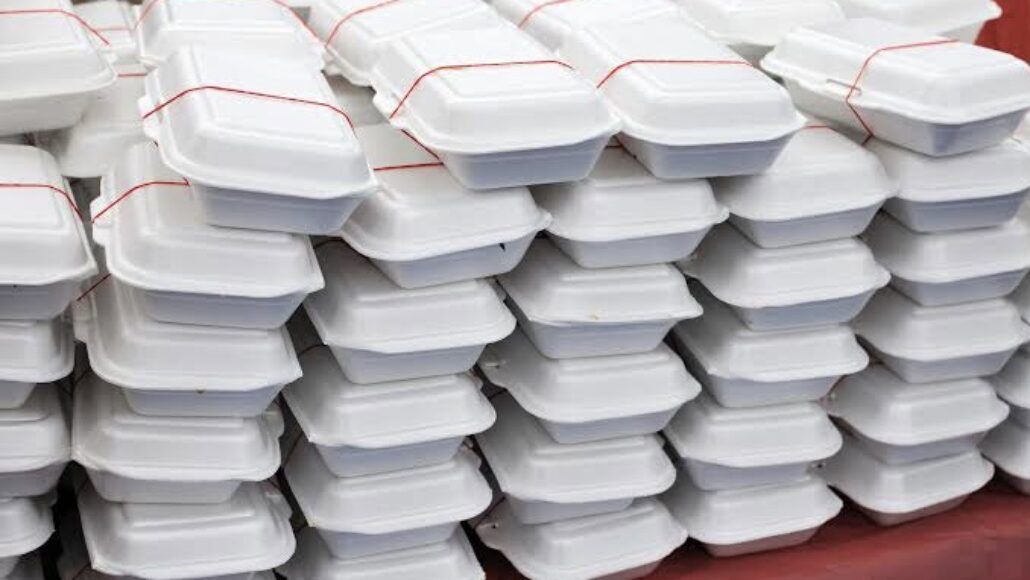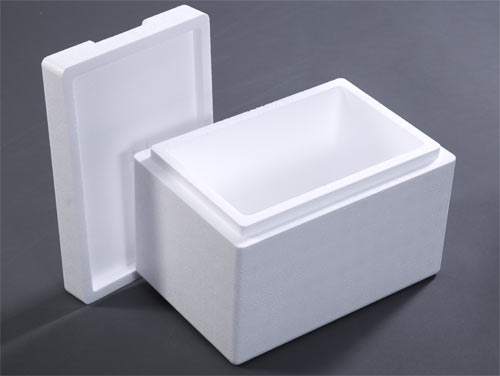Facts about Styrofoam

Expanded polystyrene foam, or polystyrene, is made up of tiny beads that have been fused together and expanded. It is frequently used in packaging, disposable containers, and insulation materials because of its well-known lightweight and insulating qualities. Polystyrene is frequently found in disposable food containers, hot beverage cups, electronics packaging and insulation panels for building projects.
Beads made of expanded polystyrene (EPS) make up the majority of polystyrene. To make the foam substance, these beads are expanded and moulded during the manufacturing process. In order to improve certain qualities, it could additionally contain additives like flame retardants. A crucial ingredient in the creation of polystyrene is styrene. The raw material for expanded polystyrene foam is a liquid hydrocarbon that polymerizes to create polystyrene. Styrene is polymerized throughout the manufacturing process to give polystyrene its stiff structure.

A synthetic polymer derived from the monomer styrene is called polystyrene. It is a multipurpose material that is well-known for being both light and stiff. Polystyrene that has been expanded and moulded into a foam substance is known as expanded polystyrene (EPS), or Styrofoam.
Uses of Styrofoam
Because it is lightweight and has insulating qualities, polystyrene is employed in a variety of applications. Typical applications include of:
1. Packaging: It is frequently utilised to cushion and safeguard delicate goods while they are being shipped.
2. Throwaway Containers: Plates, cups, trays, and other throwaway food containers are made of Styrofoam.
3. Insulation: To control temperature, insulated panels made of expanded polystyrene foam are constructed.
4. Crafts and Hobbies: Because it is so simple to cut and shape, it is frequently used in arts and crafts projects.
5. Model Building: Common materials used to create architectural models and prototypes are Styrofoam sheets and blocks.
6. Floating Devices: Because of its buoyant properties, it can be used to create floating objects like boat floats and buoys.
7. Soundproofing: Because it can absorb sound, it is used in soundproofing applications.
8. Coolers: Polystyrene coolers are widely used to maintain the temperature of objects at different temperatures.

Polystyrene has been widely used in a variety of applications for decades in the Western world. Among the principal applications are:
1. Packaging: Materials to safeguard delicate products during transit are often packaged with Styrofoam. It is a well-liked option because of its cushioning qualities and light weight.
2. Food Service Industry: Takeout and fast-food packaging is frequently packaged using disposable cups, trays, plates, and containers made of Styrofoam.
3. Insulation: Polystyrene, or expanded polystyrene foam, is used in construction as an insulator to assist control indoor temperature.
4. Crafts and Hobbies: Model building and other arts and crafts projects favour Styrofoam because of its simplicity of moulding and cutting.
Reason for using styrofoam as a packaging material
Polystyrene is frequently utilised in packaging for a number of reasons.
1. Lightweight: Polystyrene is lightweight, which lowers the packaged product’s overall weight and saves money on shipping.
2. Cushioning: Due to its superior shock-absorbing qualities, fragile objects are effectively protected when in transit.
3. Insulation: Polystyrene is a good material to use to protect goods that are sensitive to temperature changes because of its ability to regulate temperature.
4. Cost-Effective: Polystyrene is an affordable packaging solution because its manufacturing process is generally low-cost.
5. Versatility: Polystyrene is versatile when it comes to creating custom packaging solutions because it can be moulded into a variety of shapes and sizes.
Despite these benefits, Styrofoam’s non-biodegradable nature has raised worries about its effects on the environment, and researchers are looking at alternatives to address sustainability issues.
Styrofoam as pollutant
Styrofoam poses environmental concerns as a pollutant for several reasons:
1. Non-Biodegradability: Polystyrene takes a long time to break down naturally, which makes it remain in the environment.
2. Microplastic Generation: Polystyrene degrades into tiny particles over time, which adds to the issue of microplastic contamination.
3. Impact on Wildlife: Polystyrene may be mistaken for food by animals, which can result in poisoning that can be dangerous or even lethal. Furthermore, contamination from polystyrene can upset ecosystems.
4. Landfill Capacity Issues: Polystyrene occupies a large amount of area in landfills and causes sluggish degradation, which makes landfill capacity issues a problem.
5. Ocean Pollution: Marine life may be harmed by Styrofoam debris that finds its way into rivers and the ocean, which also contributes to more general problems with plastic pollution.
Due to these environmental concerns, there is a growing emphasis on reducing Styrofoam use and exploring more sustainable packaging alternatives. Although the practical features of polystyrene have made it useful, growing awareness of the material’s negative environmental effects has led to increased attempts in the West to discover more sustainable alternatives and restrict the material’s use. Bans or limitations on polystyrene are being implemented by numerous businesses and localities in response to environmental concerns.
Health implication of styrofoam as a food packaging material
The health implications of Styrofoam as a food packaging material have been a topic of concern. Some potential issues include:
1. Chemical Leaching: When Styrofoam comes into contact with hot or acidic objects, it may leach trace amounts of the chemical styrene into food. Exposure to high amounts of styrene has been linked to possible health hazards.
2. Heat-Related Concerns: There is a greater chance that Styrofoam chemicals will seep into hot food or beverages. For this reason, it’s generally advised against microwaving food in Styrofoam containers.
3. Environmental Contamination: Polystyrene poses a risk of contamination and the chemicals it contains may find their way into the food chain if it is not disposed of properly and ends up in the environment.
While the health risks are generally considered low with normal use, ongoing research and growing environmental concerns have prompted a shift toward exploring safer and more sustainable alternatives for food packaging in many regions. It’s advisable to follow any guidelines or warnings provided by manufacturers regarding the safe use of Styrofoam containers for specific food items.
Styrofoam pollution in Africa
Much as it is in many other locations, polystyrene pollution is a problem in several African countries. Among the problems that polystyrene has on the environment are the following:
1. The slow degradation of polystyrene leads to persistent contamination in the environment.
2. ChallengeswithWaste Management: Because Styrofoam takes up space in landfills and is frequently difficult to recycle, improper disposal can result in waste management issues.
3. The impact of polystyrene waste on wildlife can be significant as it can be mistaken for food, especially in aquatic situations. This could result in ingestion and possible damage.
4. Environmentaland AestheticDamage: Polystyrene litter can harm natural ecosystems and metropolitan regions’ environments in addition to being ugly.
Numerous African nations are aware of these problems and have taken action to reduce the pollution caused by Styrofoam. Some have imposed limitations or prohibitions on the use and importation of Styrofoam products in an effort to promote the usage of more ecologically friendly substitutes. Additionally, public awareness programmes are being run to encourage appropriate disposal methods.
Countries where the use of styrofoam is banned
1. United States: Some cities and states in the U.S., including places like New York City, Colorado, Maine, Maryland, Washington, San Francisco and others, have implemented restrictions or bans on Styrofoam products.
2. Canada: Certain Canadian cities and provinces, such as Vancouver and Prince Edward Island, have restrictions on Styrofoam.
3. European Union: Some EU member states, including Italy and Germany, have imposed restrictions or bans on certain Styrofoam products.
4. India: Several states and Union Territories in India have implemented bans on Styrofoam, particularly in food packaging.
5. Australia: Some local governments in Australia have restricted or banned Styrofoam products.
6. Kenya: Kenya implemented a nationwide ban on single-use plastic bags, including those made of expanded polystyrene (Styrofoam), in 2017.
7. Nigeria: The Nigeria commercial capital, Lagos, banned the use of Styrofoam completely in 2024.
It’s important to note that regulations may change, and new developments may have occurred since my last update. Always check the latest local laws and regulations for the most current information on Styrofoam bans.
Read more here about countries where Styrofoam is banned
Expanded polystyrene foam, or polystyrene, is made up of tiny beads that have been fused together and expanded. It is frequently used in packaging, disposable containers, and insulation materials because of its well-known lightweight and insulating qualities. Polystyrene is frequently found in disposable food containers, hot beverage cups, electronics packaging and insulation panels for building…